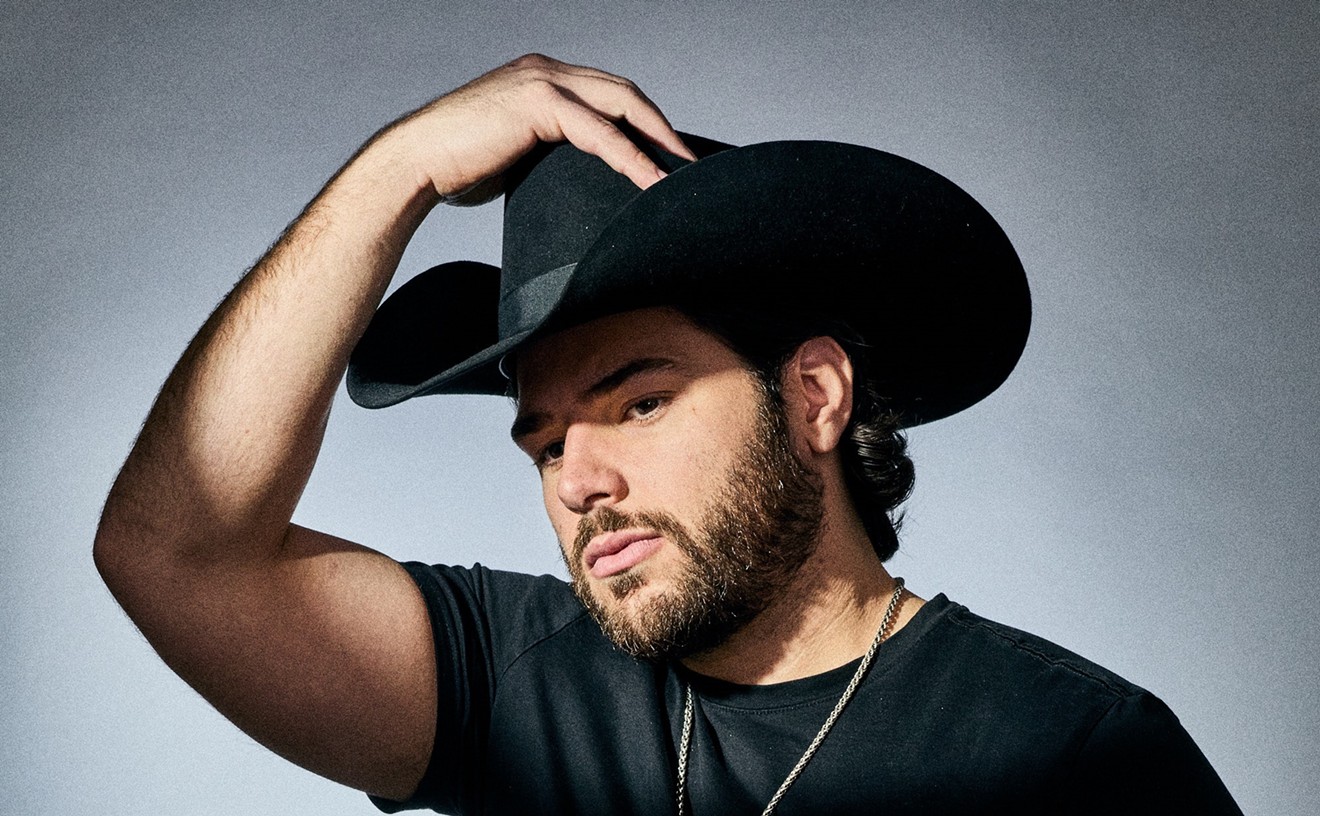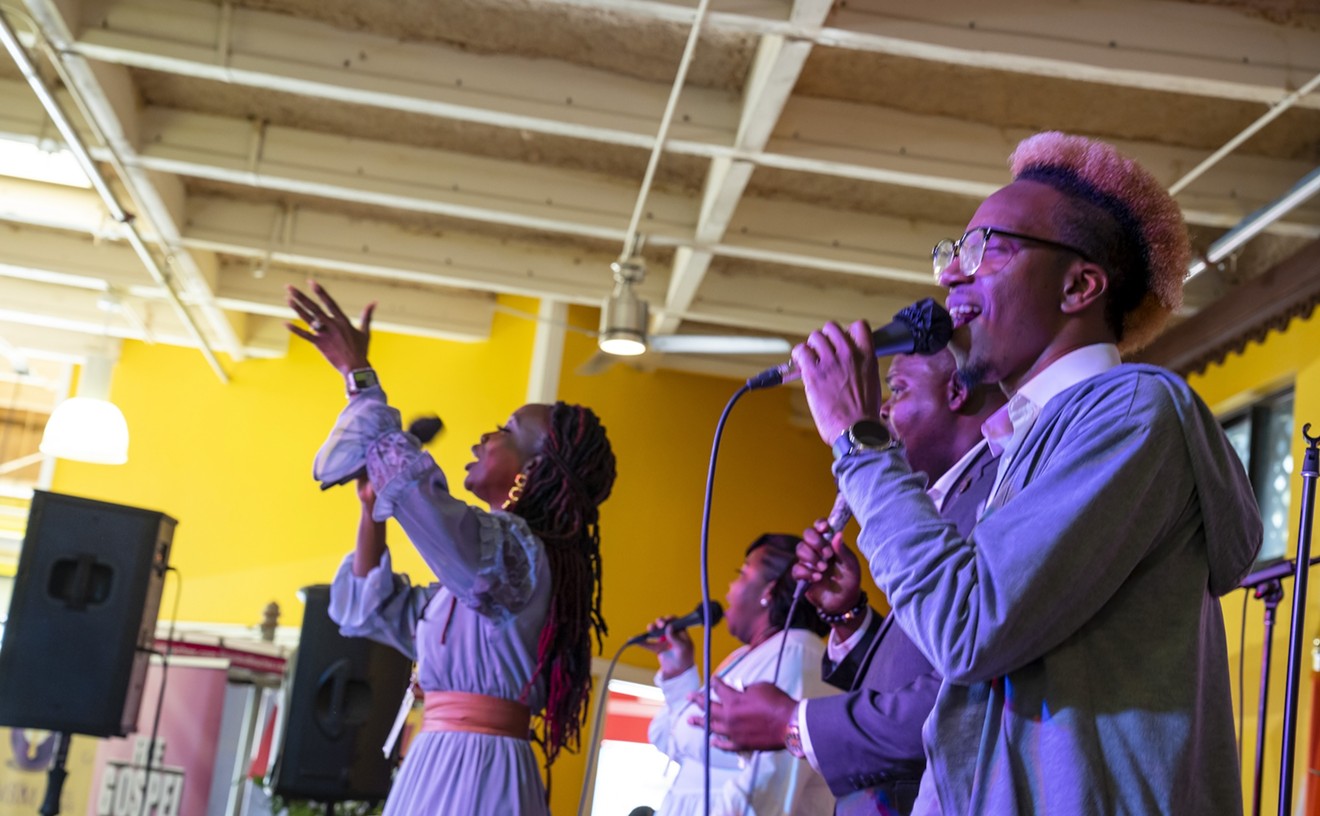In post-Internet society, things don't stay hidden for long. But there is a subculture with more than three decades of relevance that has inspired its own documentary, been co-opted by Madonna, and yet, remarkably, remains largely misunderstood.
"Walk down the street in Fort Lauderdale or South Beach, stop 20 gay men, and ask them about the icons in the ballroom scene," says Power Infiniti, mother of the House of Infiniti and ballroom culture veteran of more than 20 years.
"Most of them wouldn't even know, never heard of 'em. It's such an underground world that not even most of our own community knows about it," he continues. "When you actually go to the balls, there's so much talent. It's like Cirque Du Soleil, but all this talent is so hidden. The rest of the world never gets to see it."
See also: Catwalk Vogue Night: "A Place Where You Can Just Be You"
Power Infiniti recently "adopted" Miami DJ Gooddroid into her "family," moved by the local's commitment to shedding light on vogue culture with the Catwalk at Grand Central's The Garret.
Gays, straights, and everyone between have attended the Sunday shindig to experience the talent of these dancers and walkers, but the rich culture behind the moves can be elusive to the uninitiated. So we got on the phone with Power Infinity to discern the ins and outs of the scene.
The History
"The ballroom scene to the gay underground is different than mainstream ballroom," Power says. That's really an understatement.
It all started in the '70s, or possibly before, as a means for urban outcasts to band together for strength and social acceptance.
"A lot of gay kids and gay youth were turned away from their own families, and they'd get together because they found this social network in the clubs and on the streets," he explains. "They formed these families. The older ones took care of the younger ones, and it became like a house. There are different houses that sprung up, and when they would meet, they would compete at these balls in different categories and competitions."
The Houses
Often taking their names from fashion icons (Mizrahi, Revlon, Balenciaga), the houses of ballroom culture offer their "children" a sense of belonging, as well as mentors who can provide advice and guidance.
"It's probably a perfect utopian system if the house has both a mother and a father. It helps for the house to have both, but it's not necessary," Power says. "Us mothers have vaginas and the fathers don't," he jokes. "They both guide the house and lead the house. They are examples and role models to the kids. The mothers are drag queens, or what we refer to as femme queens or transsexuals, and the fathers are more looked at as butch queens."
Some houses are known nationally for their skills as dancers or maybe in runway, though Power says these "specialties" aren't set in stone, and really depend on the talent from year to year. Members are invited to join by house leaders, and those without houses are known as free agent, or 007s.
"Usually the reason somebody is a 007 is because they haven't really found a house that suits them," he says. "If you're going to be a 007, then be a 007 and wait and vet the houses that are after you. Do your research, take your time, and properly know what you're getting into, so that when you do commit to your house, it's a commitment that you intend to keep."
"Being in a house is supposed to be like being in family," Power continues. "The problem these days is that a lot of kids look at houses as a team and not a family. If you look at your house as a family, then it's not very easy to quit that. Family is family. If you look at the house as a team, then it's easier to jump to them every other day, and then you're never really going to have a firm commitment with any house. That's not good."
See also: Catwalk Vogue Night: A Fierce Photo Recap
The Balls
Of course, competition's at the core of ballroom culture. Participants face off for money and glory against rival houses from their home states.
"In terms of guidelines, in terms of requirement, in terms of level of expectations, it usually comes from New York," Power says. "It's not required to adopt national guidelines, but you usually do."
Awards are given at the end of each year by tallying the winners from the various competitions "that count," Infiniti says. Many smaller competitions, known as "mini-balls" or "keke balls," don't count toward awards. These feature fewer than 20 categories, though competitors may still win cash prizes, and they are also seen as great breeding grounds for 007s looking to learn new skills or attract the favor of houses.
The Categories
"Just too many categories to cover," Power says, but he enlightened us on the mainstays.
There's runway, being either the European female, a Naomi Campbell-esque, attitude-driven walking style, or the American male modeling, which derives inspiration from Calvin Klein-type fashion shows. And then there's vogue performance, with subcategories such as old style, new style, hand performance, vogue femme, arm control, among many others.
"Vogue is always the main event at almost every ball," Infiniti admits. "It is the essence of ballroom. It's dance, and it is particular and exclusive to the underground ballroom scene."
Realness is another popular category, "where you are unclockable either as a school boy, pretty boy, butch queen up in drag, femme queen transsexual -- you cannot be clocked for being gay." There are also competitions for body, face, and costume design. Competitive possibilities are almost limitless.
The Players
Balls are presided over by an odd number of judges, usually seven or nine. Normally, each judge is a respected leader representing a different house.
"You strive for the fairest panel that you can have. Now, does that always happen? No. It's ballroom," Power says. "Shade is always going to be part of the ballroom scene, but you want as little shade as possible on the panel."
Each ball also features a highly-regarded MC or commentator who raps over the beats, hyping the crowd and orchestrating the rounds through bossy chants and repetitive commands.
"A commentator can really become like a superstar to the ballroom kids," Power says. "Put them on a flyer, and based on that alone, a lot of hype and excitement builds up."
See also: Miami's Ten Best Gay Clubs
The Music
House music is the lifeblood of ballroom culture, but ballroom DJs are not anything like the contemporary DJs headlining festivals.
"It's very particular," Power says. He has his own DJ career, but refuses to play ballroom competitions. "The DJ has to know what to play, not just to get it going throughout the ball, but for each category, and he has to also be willing and able to switch up these beats upon request."
There isn't really any mixing involved, but just the looping of these ballroom beats. Ballroom music is distinctive for it's punctuated, staccato style, very harsh with it's four-to-the-floor, often very cold and mechanical, and full of attitude. Classic vogue anthems include Cajmere's "The Perculator" and "The Ha Dance" by Masters at Work. "The ha beat" is foundational to vogue, the "ha" being a sample from the film Trading Places.
The Glossary
Last but not least, ballroom culture employs tons of gay lingo. Anyone attending a ball better watch out for flying "shade," the dissy-attitude tossed around and thrown in the face of competitors. Dancers "slay" on another on the runway. A girl who is said to "process" the competition is working through her category with ease.
And here's an important one for all you curious straight men scratching your heads in the corner.
"Everybody is a girl, so whenever you say 'oh the girls are feeling it,' that means everybody," Power says. "It doesn't matter if you're a girl or a boy. You just refer to everybody as a girl."
Crossfade's Top Blogs
Catwalk: A Night of Vogue. Every month. The Garret at Grand Central, 697 N. Miami Ave., Miami. The party starts at 11 p.m. and Admission costs $5 to $10. Ages 18 and up. Call 305-377-2277 or visit grandcentralmiami.com.
Follow Crossfade on Facebook and Twitter @Crossfade_SFL.
Follow Kat Bein on Twitter @KatSaysKill.











